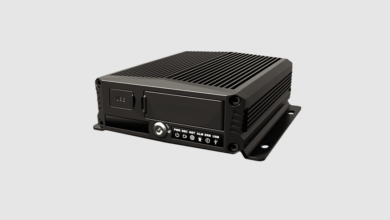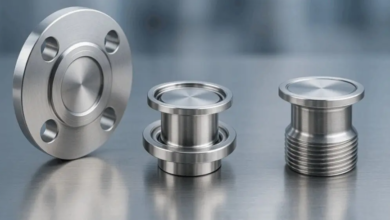Benefits of Using Oscillating Heat Pipe

Oscillating heat pipes (OHPs) are gaining recognition as an innovative and dependable cooling solution. They work smartly by moving liquid and vapor back and forth inside tiny tubes, which helps move heat more effectively. This guide highlights the key benefits of oscillating heat pipes and explains why they’re increasingly used for cooling in advanced electronics, vehicles, and space systems.
How Oscillating Heat Pipes (OHPs) Work
An Oscillating Heat Pipe is a loop of thin tubes (1–3 mm wide), shaped like a zigzag or coil, partially filled with a special liquid.
- Evaporation and Bubble Formation (at the hot end)
This creates bubbles of vapor that grow bigger and increase pressure.
- Oscillating Motion Begins
The oscillating motion starts when heat causes vapor to expand, pushing the liquid and vapor through the pipe. At the cooler end, the vapor cools and turns back into liquid, lowering pressure. This pressure difference causes the fluid to move back and forth naturally inside the pipe.
- Heat Moves to the Cooler End
Heat moves to the cooler end as the vapor carries heat from the hot side, then cools and turns back into liquid, releasing heat at the cooler side.
Key Benefits of Oscillating Heat Pipes
- Superior Heat Transfer Performance
Oscillating heat pipes transfer heat far more effectively than regular fluids. They do this by constantly moving liquid and vapor back and forth inside small tubes. This motion stirs the fluid, breaks up heat barriers, and helps mix hot and cold areas. As a result, heat moves through the system thousands of times faster than it would with a still fluid. They can sometimes cool better than copper or silicon, making them ideal for powerful devices in small spaces.
- Passive and Energy-Efficient Operation
Oscillating heat pipes work without external power or moving parts. They rely on natural fluid movement to transfer heat efficiently, using very little energy, running quietly, and needing minimal maintenance. This makes them perfect for reliable, long-term cooling in sensitive or tight spaces.
- Compact and Lightweight Design
Oscillating heat pipes are compact and lightweight, ideal for cooling small or portable devices. They can be made in various shapes to fit different products, delivering efficient cooling while taking up very little space.
- Improved Reliability and Durability
Improved reliability and durability come from simpler designs with fewer parts, strong materials, and smart engineering. Using long-lasting materials and easy-to-maintain designs helps machines work better, last longer, and reduce maintenance costs.
- Versatility Across Applications
Thermal management systems prevent overheating in various industries. They cool computer parts, function in extreme environments like airplanes and space, support electric vehicle heat management, and enhance renewable energy systems. These systems come in different sizes and can handle various amounts of heat. They are also durable and reliable, even in tough environments.
- Environmental and Cost Benefits
Using energy-efficient cooling systems helps both the environment and your wallet. These systems are smaller and use fewer materials, which means less waste during production. They also use less electricity, so your energy bills go down, and they don’t wear out as quickly, saving on repairs. By choosing eco-friendly cooling options, like natural refrigerants that don’t harm the planet, homes and businesses can reduce their impact on climate change. In short, switching to energy-efficient cooling saves money and helps protect the environment for the future.
Challenges of Using Oscillating Heat Pipes
Oscillating heat pipes are highly effective for cooling, but they have some significant limitations. Here’s what makes them tricky to work with:
- Needs a Minimum Amount of Heat to Start
OHPs don’t work well unless there’s enough heat to get the fluid inside moving. If the heat is too low, the flow stops or becomes unstable, resulting in a drop in cooling performance.
- Works Best in a Narrow Temperature Range
They only operate well within a specific range of heat. If there’s too little heat, they won’t start. Too much heat can cause the system to dry out and stop working properly.
- Affected by Position and Gravity
Oscillating heat pipes function in various positions, but their effectiveness relies on how they are positioned. Improper placement can reduce their efficiency or make them more difficult to start.
- Very Sensitive to Fluid and Fill Level
The type of liquid, the volume filled, and the tube size all influence how effectively an oscillating heat pipe functions. Using the wrong combination can lead to poor performance or failure.
- Design Has to Be Just Right
Oscillating heat pipes must be built with the correct shape and size. If there’s even a small mistake in their design, they won’t cool properly. The movement of liquid and vapor inside the pipes depends on precise details, so careful planning is essential for proper function.
- Limited Range of Heat Loads
Oscillating heat pipes work most effectively when dealing with medium levels of heat. If the heat is too low, they may not start working properly, and if the heat is too high, they may become less efficient or fail to cool properly. Therefore, OHPs are not the best option for systems with very low or very high heat output.
- Hard to Predict and Model
Oscillating heat pipes have a mix of liquid and vapor moving in a complex way inside the pipes. This makes it hard to guess exactly how they will behave using simple methods.
Conclusion: The Promise of Oscillating Heat Pipes (OHPs)
Oscillating Heat Pipes are a clever and modern way to cool devices. They cool efficiently by moving liquid and vapor inside small tubes without pumps, ideal for electronics, spacecraft, electric cars, and solar panels.
Oscillating Heat Pipes (OHPs) are quiet, lightweight, and use very little energy. This makes them great for cooling small or portable devices. They have a long lifespan and are more environmentally friendly.
But to work properly, OHPs need careful design. The right kind and amount of liquid, the tube shape, and the heat level all have to be just right. If these aren’t balanced, they might not cool well or could stop working. That’s why building and testing them can be tricky. Oscillating heat pipes offer an efficient and eco-friendly cooling solution with strong potential for wider use as technology advances.



